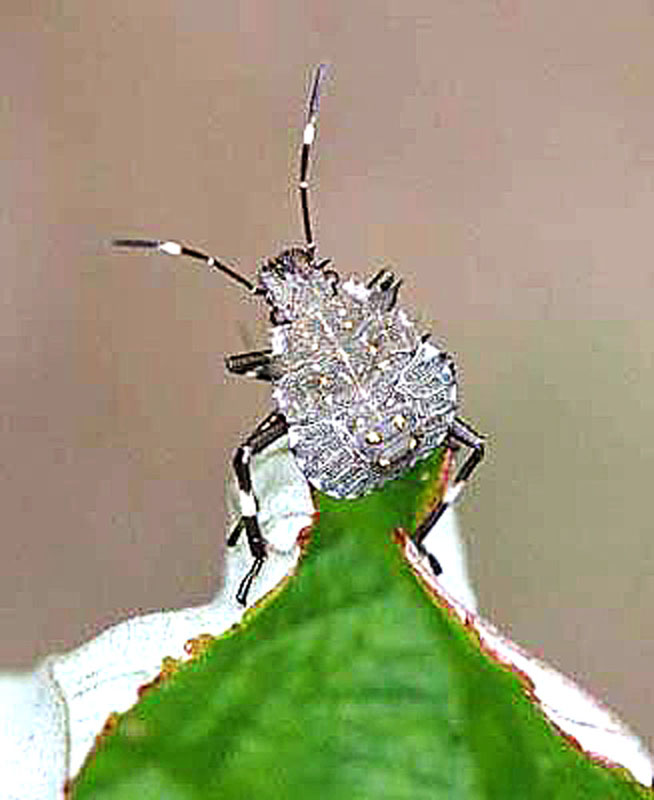Some vegetable plants are starting to fail in this heat. Squash vine borers attack any of the vine crops, causing plants to suddenly wilt and collapse. The adult, a clear-winged moth, lays eggs on the plant which hatch out and bore into the stem. They feed on the interior of the stem, disrupting the water flow. Frass (excrement mixed with plant fibers) may appear at the base or along the stems of the plant. Sometimes, if caught early enough, a vine can be saved by slitting the stem on one side and removing the larva. The slit portion of the stem should be buried in soil at the base of a leaf to root. Often though, the plant dies before it has a chance to root. Removal of the plant becomes necessary. Control measures should be applied early in the season, when the vines begin to run, and continued for a month or so at the labeled interval. They should be applied in the evening, avoiding open flowers if possible, to protect foraging bees.
Powdery and downy mildew are fungi that attack during periods of high humidity or when leaves are still wet at evening fall. Protective fungicides may be applied, but badly damaged plants should be removed.
Spider Mites, which thrive in heat, have made short work of many bean crops. There is high pressure from Bean Beetles, as well, this year.
Cabbages and cool-season crops, such as lettuce and many greens, are bolting (going to seed) and should be removed.
Damage is occurring to a variety of plants as Brown Marmorated Stink Bug nymphs suck the sap from already drought-stressed plants. Plants collapse because they lose water faster than the roots can replace it. There have also been reports of the bugs attacking at the base of flower buds, causing them to abort before they can produce fruit, of corn silks being shriveled at the end of the cob, so that pollination does not occur, and of flower petals being sucked dry before they can finish developing.
These insects are resistant to control. Rotating products, applying residual action types when insects are active but temperatures are at their coolest, and thorough coverage, will help control these nymphs. Adults will be less affected. The nymphs are spined and may appear humped. The presence of banded antennae and legs are good indicators. We have not previously thought of this exotic import as a real threat to crops, but some experts are taking a second look at that thinking, as reports of damage increase.
Whiteflies arise in clouds around heavily infested plants. When the weather is hot, control is difficult as one complete life cycle occurs in less time than most pesticides allow repeat applications. Therefore, for each generation you treat, a generation of breeders may slip by you.
If these and other problems have caused you to have gaps in your garden, here are some replacements you may still consider planting:
Beans (check days to harvest)
Beets, especially for greens
Cabbage (from plants)
Chard
Cole plants (Broccoli, Brussels Sprouts)
Greens
Fast maturing okra and summer squash
Radish
By Barbara Leach [email protected]

